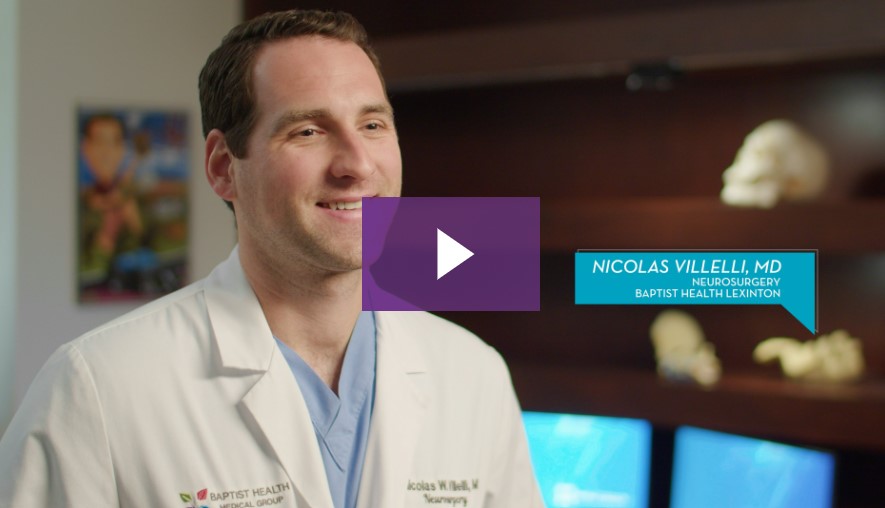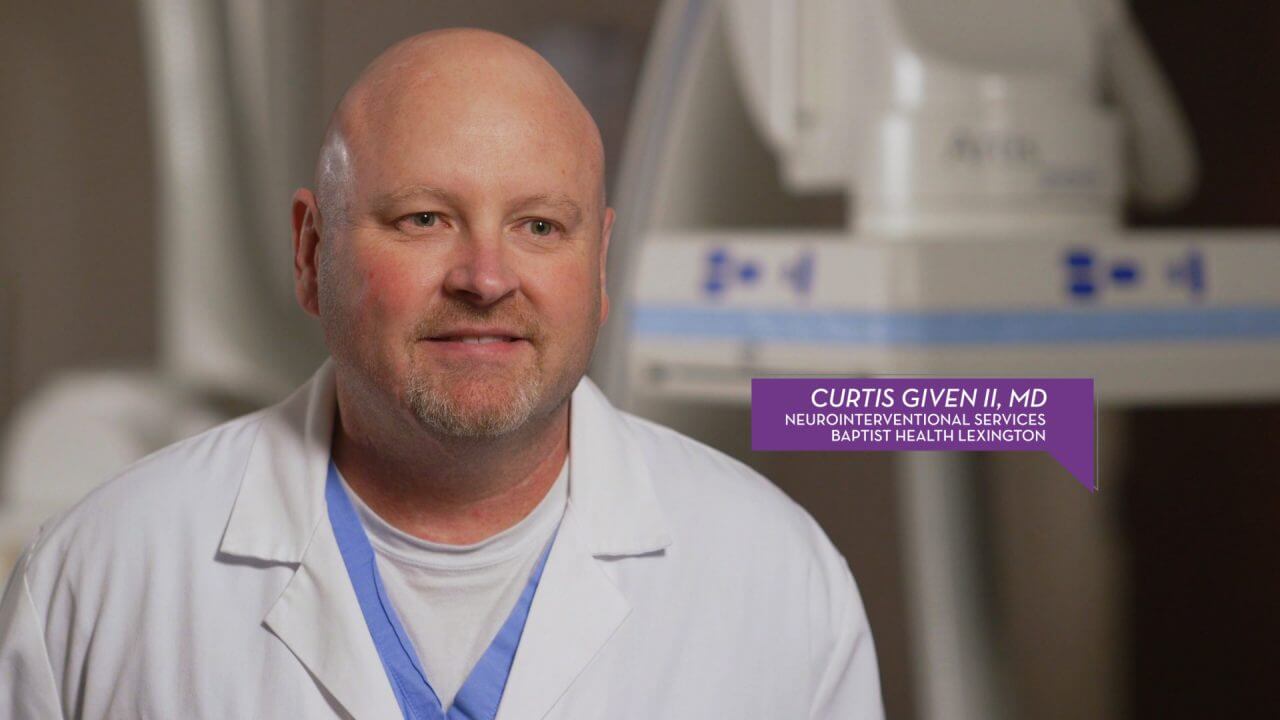Cerebral Aneurysm Treatment in Lexington, KY
Baptist Health Lexington: Cerebral Aneurysm Treatment
Cerebral aneurysm treatment may differ based on the condition of the aneurysm. Learn more about cerebral aneurysm treatment in Lexington, Kentucky.
Cerebral Aneurysm Treatment in Lexington, KY HealthTalks Transcript
Nicolas Villelli, MD, Neurosurgery:
An aneurysm is a weakness or outpouching that comes off one of the blood vessels in the brain. Generally, it does not cause symptoms, unless it bleeds. When it bleeds, it can be a life-threatening issue that requires urgent treatment.
We also find a lot of aneurysms that haven’t bled. Patients will get a CT scan or MRI for a different reason, like vision changes or dizziness. This will reveal what we call an incidental aneurysm. These are aneurysms that have not bled, but a lot of them, based upon the location and size, need to be treated. When an aneurysm bleeds, patients will often present with the sudden onset of a very severe headache, but they can also present with a lot of other symptoms that are similar to stroke. They can present with trouble speaking, facial droop, weakness in their arms or legs, or loss of consciousness.
Our cerebrovascular team at Baptist [Health] Lexington is always at the forefront of using the latest devices and technologies to treat aneurysms. Over the past couple of decades, we’ve had the emergence of the field of endovascular therapy. This is where we can treat aneurysms from within the blood vessels. We’ll get into arteries, either in the wrist or the groin. From there, we can pass up wires and catheters using X-rays to guide us until we get all the way to the aneurysm. Then, we can treat it from within. When someone has an aneurysm bleed, it’s a very extreme process. Patients are nearly dead or can die very quickly. To be able to help them, watch them recover, and get back to normal is extremely gratifying.
Next Steps and Useful Resources:
Find a Provider
Treating Abdominal Aortic Aneurysm
CAT Scan vs. CT Scan: Are They the Same Procedure?
MRI vs MRA: What’s the Difference?
Spot the Signs of a Stroke



